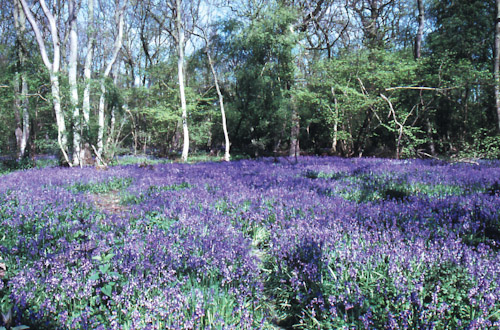
The world is now on a path to building a future of living in harmony with nature. In October 2010, in Japan, governments agreed to the Strategic Plan for Biodiversity 2011-2020 and the Aichi Targets as the basis for halting and eventually reversing the loss of biodiversity of the planet.
To build support and momentum for this urgent task, the United Nations General Assembly at its 65th session declared the period 2011-2020 to be “the United Nations Decade on Biodiversity, with a view to contributing to the implementation of the Strategic Plan for Biodiversity for the period 2011-2020” (Resolution 65/161).
The United Nations Decade on Biodiversity will serve to support the implementation of the Strategic Plan for Biodiversity and promote its overall vision of living in harmony with nature. Its goal is to mainstream biodiversity at different levels. Throughout the United Nations Decade on Biodiversity, governments are encouraged to develop, implement and communicate the results of national strategies for implementation of the Strategic Plan for Biodiversity.
Each day counts. The actions taken by individuals, stakeholders and governments are important steps, one building on the other, towards protecting the life support systems that not only ensure human well-being, but support the rich variety of life on this planet.
What is Biodiversity?
Biological diversity - or biodiversity - is the term given to the variety of life on Earth and the natural patterns it forms. The biodiversity we see today is the fruit of billions of years of evolution, shaped by natural processes and, increasingly, by the influence of humans. It forms the web of life of which we are an integral part and upon which we so fully depend. This diversity is often understood in terms of the wide variety of plants, animals and microorganisms. So far, about 1.75 million species have been identified, mostly small creatures such as insects. Scientists reckon that there are actually about 13 million species, though estimates range from 3 to 100 million.
Biodiversity also includes genetic differences within each species - for example, between varieties of crops and breeds of livestock. Chromosomes, genes, and DNA, the building blocks of life, determine the uniqueness of each individual and each species.
It is the combination of life forms and their interactions with each other and with the rest of the environment that has made Earth a uniquely habitable place for humans. Biodiversity provides a large number of goods and services that sustain our lives.
The Convention on Biological Diversity
At the 1992 Earth Summit in Rio de Janeiro, world leaders agreed on a comprehensive strategy for "sustainable development" -- meeting our needs while ensuring that we leave a healthy and viable world for future generations. One of the key agreements adopted at Rio was the Convention on Biological Diversity. This pact among the vast majority of the world's governments sets out commitments for maintaining the world's ecological underpinnings as we go about the business of economic development. The Convention establishes three main goals: the conservation of biological diversity, the sustainable use of its components, and the fair and equitable sharing of the benefits from the use of genetic resources.
The Convention on Biological Diversity, as an international treaty, identifies a common problem, sets overall goals and policies and general obligations, and organizes technical and financial cooperation. However, the responsibility for achieving its goals rests largely with the countries themselves.
Private companies, landowners, fishermen and farmers take most of the actions that affect biodiversity. Governments need to provide the critical role of leadership, particularly by setting rules that guide the use of natural resources, and by protecting biodiversity where they have direct control over the land and water. Under the Convention, governments undertake to conserve and sustainably use biodiversity. They are required to develop national biodiversity strategies and action plans, and to integrate these into broader national plans for environment and development.
 Achieving the Aichi Targets by 2020
Achieving the Aichi Targets by 2020
There are five strategic goals and 20 ambitious yet achievable targets. Collectively known as the Aichi Targets, they are part the Strategic Plan for Biodiversity. Their purpose is to inspire broad-based action in support of biodiversity over this decade (2011-2020) by all countries and stakeholders promoting the coherent and effective implementation of the three objectives of the Convention on Biological Diversity: conservation of biodiversity; sustainable use of biodiversity; fair and equitable sharing of the benefits arising from the use of genetic resources.
Goal A
Address the underlying causes of biodiversity loss by mainstreaming biodiversity across government and society
Goal B
Reduce the direct pressures on biodiversity and promote sustainable use
Goal C
Improve the status of biodiversity by safeguarding ecosystems, species and genetic diversity
Goal D
Enhance the benefits to all from biodiversity and ecosystem services
Goal E
Enhance implementation through participatory planning, knowledge management and capacity building

